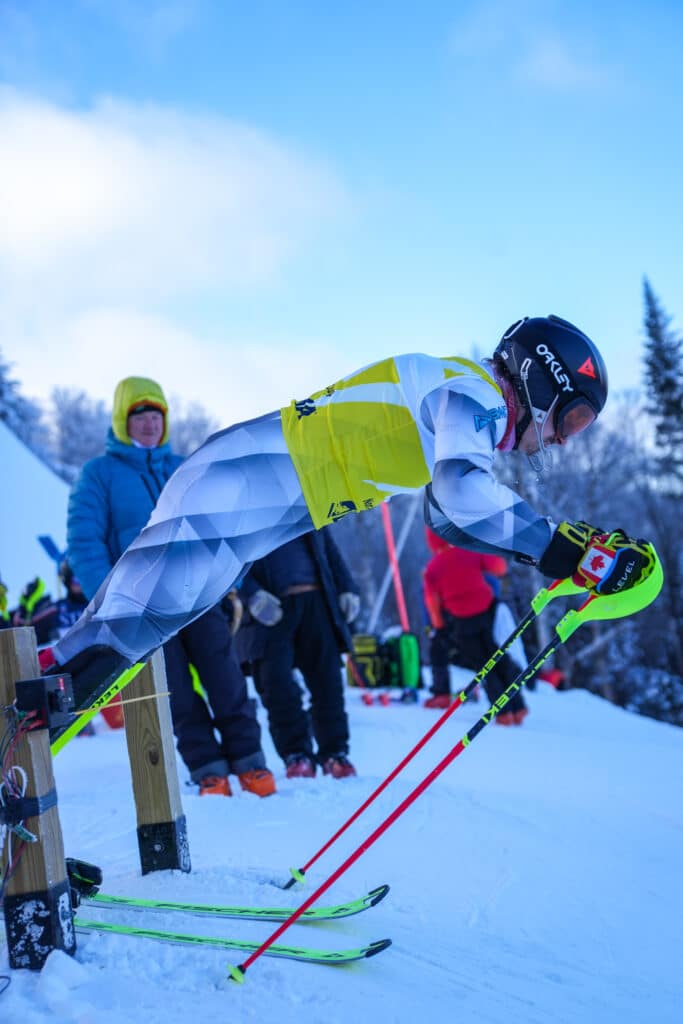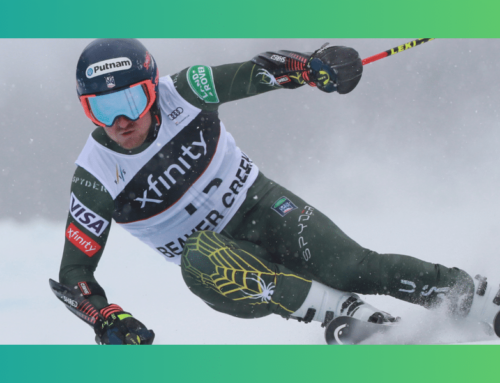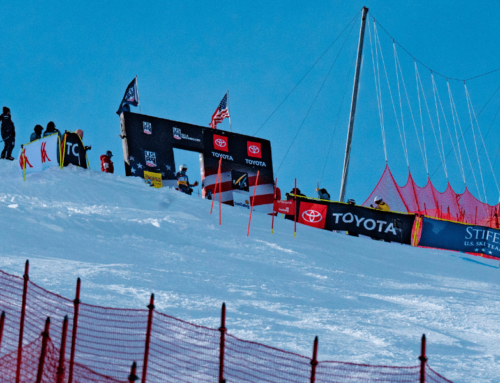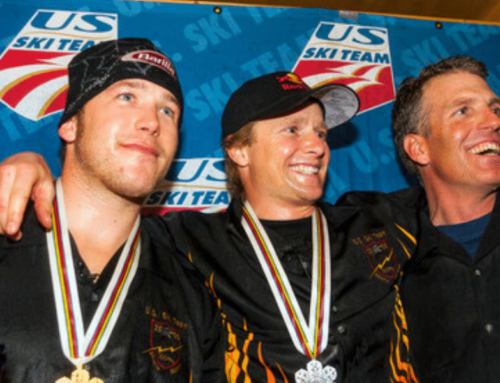The Margin of Victory
Featured Image: A female athlete getting ready to kick out of the start. Credit: Ellie Hartman/Ski Racing Media
In the sport of ski racing, the success of an athlete, especially in their developmental stages, can come down to the aspects that seem less impactful. Subtle differences in training, body development, strength, where the athlete begins on the start list, and several other factors can cause different outcomes.
It is critical to be aware of small changes or differences during the athlete’s developmental phases within the sport to understand and map out conducive performance planning.
Body Development
During the initial years of FIS, specifically between the ages of 16 and 17, the athlete’s physical growth will gradually approach its ultimate state and structure. The growth of the athlete is roughly established for the rest of their life during the last stages of puberty.
There are certain exceptions, such as individuals who develop later in life, those who have genetic predispositions, or those who undergo hormonal therapies. However, in most cases, the primary muscle groups are already developed, and significant further development is limited to a small group of individuals.
In the following years, the athlete’s physical growth will gradually decrease, leading to a less noticeable enhancement in their physique compared to the initial stages of development.
Based on the skier’s technical progress, proper performance planning, and assuming there are no interruptions due to injury, there is a reasonable expectation for the individual to achieve a ranking within the top 50 of their age group.
It is important to establish an environment within training and racing that is conducive to the individual athlete. Understanding what will assist the athlete within particular stages of physical development in their first years of FIS will give them the guidance to excel.
Subtle Changes for a Greater Difference
In Indy car racing, after 500 miles of lapping, numerous pit stops, yellow flags, and accidents, a 0.5-second difference between the first and second-place finishers represents who wins and receives the $500,000 bonus. In Alpine skiing, the margin is even smaller.
There are occasionally three-way ties down to .001, and two-way ties are no longer a surprise. In tech events, one second is a tiny difference in distance, so having 15 racers finish within a second is not uncommon. The separation of most racers by just a hundredth of a second can have an impact on their result.
What can break the tie? A marginal difference!
Focusing on altering the aspects that may seem minimal is crucial to closing small time gaps. The little changes such as a harder push out of the start with one extra skate, faster exits out of combinations, cleaner entrances into a wide-set gate, minimizing tactical mistakes, or a better aerodynamic stance can all make a huge difference in this sport.

Other Key Aspects to Closing the Margins
Other subtle changes to focus on during these critical times of athletic development are:
Strength – Needed to resist extreme forces and can peak anyone’s ability to make up minimal time differences.
Agility – Accommodates joint and muscle flexibility, which assists athletes on the course in challenging body positions.
Balance – Utilized to maintain self-awareness in space and time.
Speed – It is essential to engage in exercises focusing on quick speeds to improve reaction times to unpredictable situations.
Endurance – To sustain the physical demands of an average race day. Average race days can be 6+ hours on the hill, so athletes need to engage in performance planning to improve their endurance capacity for exerting days throughout the season.
Mental Strength and Capacity – Finding ways to overcome underlying fears of injury and feelings of self-doubt. Also, to mentally get through the challenges of extreme elements with a positive attitude is crucial in enhancing brain function for athletes.
Inspection- Finding various mental aspects that assist with good judgment of the course, memory, imagination, reaction times, and line.
Technical Ability – The continuous practice of technique is crucial for skiing the ideal lines of the course.
Tactical Capabilities – to time and anticipate your movements according to the limits of a given course and distribute the physical and mental resources.
Equipment and Wax- Learning the aspects of wax and equipment preparation is incorporated into off-snow training.
Analyze your individual resources to find the different aspects needed for improvement!
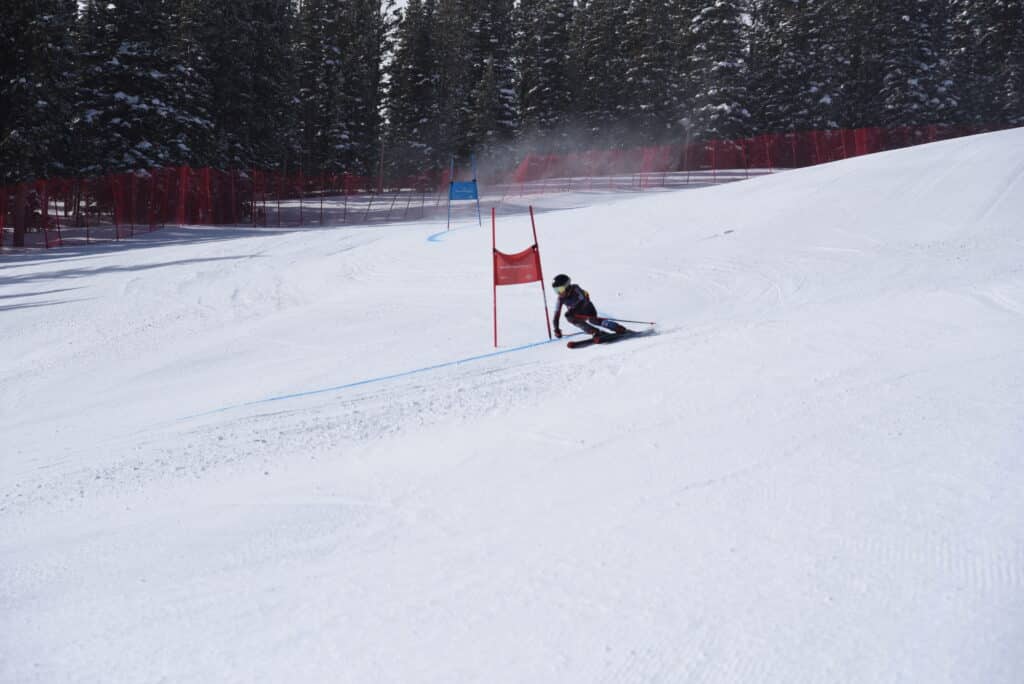
Magic Flip 30
Two-run competitions have a standard of the flip 30, where the top 30 racers reverse their order for the second run. Historically, races used to have a flip 15, but with improved quality of surface (injections and use of chemicals), the flip 30 became a new standard.
Nevertheless, flip 15 is still an option when adverse snow and weather conditions are present, but it is rarely practiced.
With the flip 30, the time difference will impact temperature, humidity, wind, and surface. Thus, making it into the flip 30 can present an advantage for the later athletes, who are now running first on the track. Contrastingly, this can be a disadvantage for the winner of the first run, who will start bib-30 on the second run.
Making the flip for the second run can be a “ticket to stardom” for developing FIS athletes. The more pristine conditions of starting first can give an athlete the chance to move up in the rankings. Athletes should use this incentive to drive their focus into bringing their times down in the first run so that they break into the top 30 and utilize the advantage of being one of the first on the track.
There exists a wide array of factors that can have a slight impact on a ski racer, especially during the initial stages of development. Various crucial aspects can enable young athletes to excel and progress in the sport. Concentrating on minor modifications can lead to significant improvements.
The number of opportunities for improvement is unlimited!
